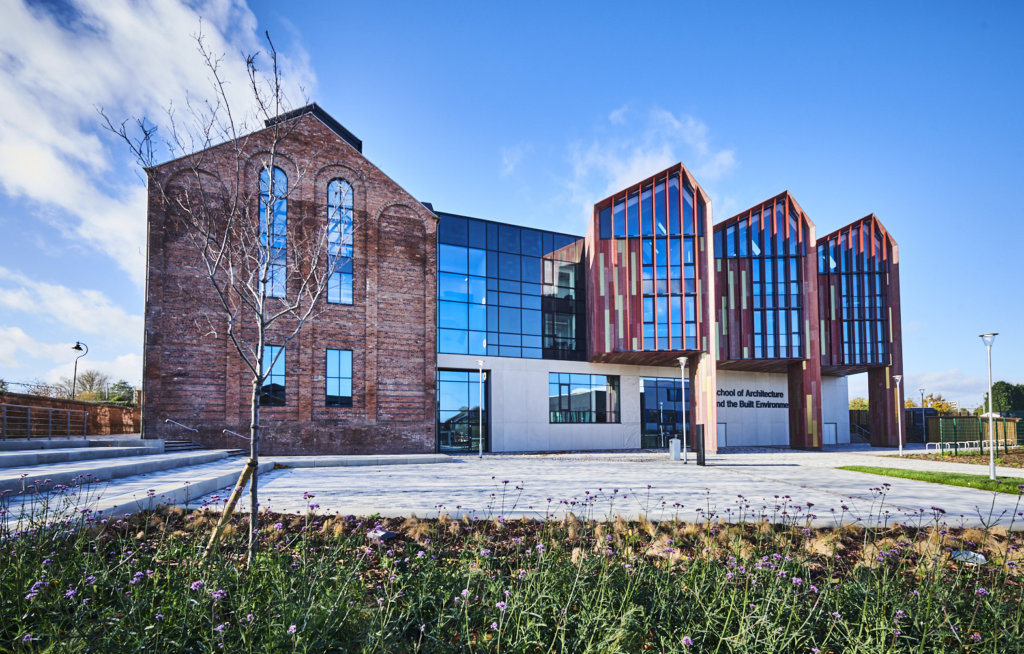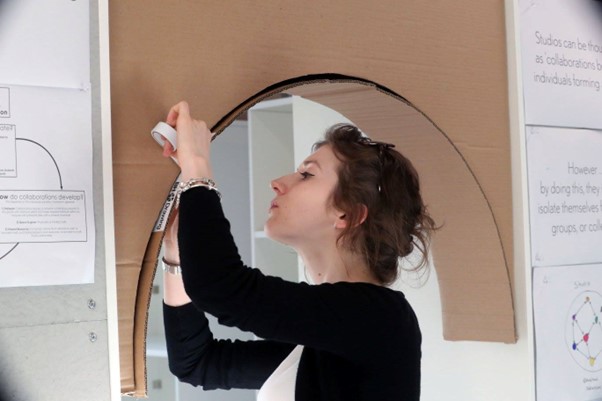
At its most basic level, architecture is concerned with the physical world around us. However, it is more than just the built environment — architecture is a reflection of culture, society, and lifestyle. The modern world can still witness the aesthetic and rich history of ancient societies through the Great Pyramids of Giza in Egypt, for example, thanks to the architects of old, who worked hard to leave tangible evidence of their own culture behind.
If there is anything that the pandemic has taught us, it is how we must constantly adapt to changes happening around us. To always be ready for change is to be innovative and forward-thinking when it comes to solving our contemporary problems — qualities every budding architect should strive for. Even if every architecture student’s dream is to manipulate their surroundings into something that could last the tests of time — like Greece’s Parthenon or Cambodia’s Angkor Wat — it’s imperative that we strive for bigger goals: to push the boundaries of the profession and to make a difference in the present world.
Intrigued? Sounds like your kind of dream? Check out these four universities that are setting students up for success in their future endeavours:
The University of Wolverhampton

Budding architects at the The University of Wolverhampton are provided endless access to industry-level tools and resources during their studies. Source: The University of Wolverhampton. Source: The University of Wolverhampton
Gone are the days where architects were limited by the tools of their trade. At the University of Wolverhampton’s School of Architecture and the Built Environment, the sky’s the limit for aspiring architects. Here, when it comes to tools, resources and technologies — students work with only the latest and the best.
The School operates out of the University’s new Springfield campus, which is as innovative as can be. The 120 million pound investment spans 12 acres, boasting six ground-floor laboratories, a 125-seater lecture theatre, and one top-floor super studio. This state-of-the-art “super-campus” houses laboratories covering the core aspects of construction and civil engineering, including structures, hydraulics, and geotechnics. It is also fully equipped with digital construction tools, such as 3D laser scanners, drones, and Virtual Reality equipment.
These are precisely what awaits anyone who enrols into the fully-accredited courses the School of Architecture and the Built Environment is known for delivering. With the BSc (Hons) Architecture, students learn to master key communication skills, including hand drawing and model-making, whilst also developing a wide range of digital skills using professional industry tools, including Building Information Modelling software.
The BSc (Hons) Quantity Surveying is a better pick for learners keen on spearheading cost, financial and contract management of construction projects, from inception to demolition/deconstruction. Meanwhile, the BEng (Hons) Civil Engineering equips students to apply mathematics and analytical skills with confidence as they progress towards becoming Chartered Civil Engineers and practitioners in the global community. In fact, all three programmes were designed to prepare students to gain the perks of a chartered professional — thanks to accreditation by the Architects Registration Board (ARB), the Royal Institute of British Architects (RIBA), Royal Institute of Chartered Surveyors and Institution of Civil Engineers.
Convinced? Explore the School of Architecture and the Built Environment’s website today, take your pick, and you’ll be well on your way to achieving architectural excellence.
Cardiff University

Students at WSA are welcome to conduct impactful research during their studies. Source: Welsh School of Architecture Facebook
Cardiff University’s Welsh School of Architecture (WSA) aims to make an impact by solving real-world problems. One of the most compelling projects WSA researchers have carried out was in 2009 and 2010, where they designed and built the first affordable low carbon housing in the UK. The project was so successful that the Welsh government decided to invest 91 million pounds to incorporate sustainable designs into more than 1,400 new homes across Wales.
Sustainable design is at the forefront of WSA’s approach. The university boasts real impact in these four areas — sustainability and energy, industry performance, heritage, communities’ well-being and societal justice — can only be achieved by in-house teamwork, collaborations with the government, industry, and NGOs.
At WSA, students can conduct impactful research, develop softwares that improve industry performance, engage with communities, and even campaign to save historic buildings from being demolished thanks to the outstanding support Cardiff University offers — assistance from faculty members, investments in technological infrastructure, and an array of specialist research equipment.
“Though our research and teaching cover a wide spectrum of topics and aspects of architecture, our mission as a School is to contribute to the creation of a built environment that enhances people’s lives now while contributing to the wellbeing of future generations,” says Juliet Davis, Head of WSA. Click here to learn more about Cardiff University and follow them on Facebook, Instagram, and YouTube.
London Metropolitan University

The School of Art, Architecture, and Design is home to several industry leaders — all of whom are ever-willing to help students follow in their footsteps. Source: School of Art, Architecture, and Design Facebook
London Metropolitan University ranks 31st in The Guardian’s Best UK universities for architecture list 2022, and for good reason — students here not only learn practical skills and gain the confidence they need to excel in their future professions, it is also a place where they can thrive intellectually.
Faculty members of London Metropolitan University’s School of Art, Architecture, and Design aren’t just lecturers, they are also leading professionals in their respective fields. Although most hold qualifications in the field of architecture, lecturers that teach at London Metropolitan University come from various backgrounds. A good example for the diverse careers that await those who graduate from the BA (Hons) Architecture programme is shown in faculty member Ektoras Arkomanis, who is a filmmaker as much as he is a senior lecturer at the institution.
The School is located in Calcutta House at Aldgate campus, where award-winning architects like Francesca Tattersall graduate and go on to make change in the world. She was the postgraduate winner of the 2021 Architect’s Journal Part 2 Student Prize — a prestigious award given to architecture students in the UK. Tattersall bagged the award for her project “Rigorous Simplification: Self-Build,” a self-build housing scheme for a site in Dalston, East London.
“As a school, we take the climate change agenda very seriously at all levels of study, with many of the students’ projects addressing retrofit as well as sustainable new-build opportunities,” says Professor Christian Frost, Head of architecture at London Met. “Francesca’s win is, therefore, for us both the timely recognition of this agenda as well as acknowledgment of an outstanding piece of work.” Check out London Metropolitan University and what it has to offer here and follow them on Facebook, Twitter, Instagram, YouTube, and LinkedIn.
University of Strathclyde

This Department of Architecture is located in the heart of Glasgow — one of the UK’s largest cities. Source: University of Strathclyde Facebook
At the University of Strathclyde’s Department of Architecture, architecture and urbanism meet and are taught to students in a multi-disciplinary nature. The department’s strength lies in its ability to carry out meaningful research in areas like sustainability, urbanism and global cities, architectural design and conservation, construction law, and digital construction.
This is in part, due to the faculty members of the UK’s leading technological university, who bring with them not just knowledge but a wealth of experience in the field. For example, The Head of the Department, Professor Timothy Sharpe, is an architect and a researcher with expertise in low energy design and ventilation. Other faculty members — like Dr. David Grierson — are experts in other fields within architecture, which just builds a tapestry of resources for students lucky enough to learn from them.
The department firmly believes in giving their students an edge, hence why they continuously seek to establish close links and partnerships with creative design, construction, and engineering industries. This provides networking opportunities and career prospects to students, one of the most valuable things an institution can offer its future graduates. Students don’t just get to study abroad to add to their CV, they can collaborate with researchers outside of Scotland too.
“Strathclyde Department of Architecture is dedicated to providing the highest quality of architectural education, based on world class research,” says Professor Sharpe. Find out more about University of Strathclyde’s course offerings here and follow them on Facebook, Twitter, YouTube, Instagram, and LinkedIn.
*Some of the schools featured in this article are commercial partners of Study International









